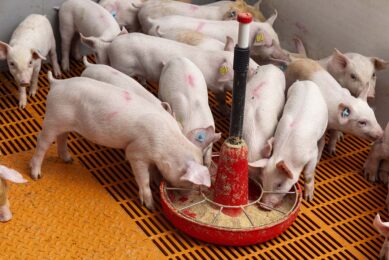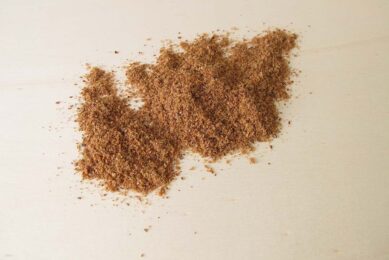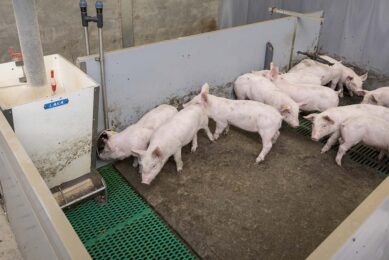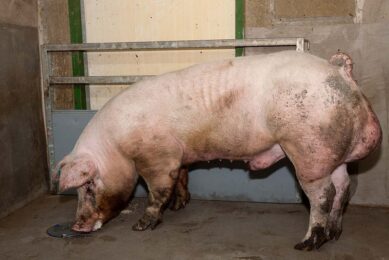Responsible use of antibiotics in the Asia Pacific region

Globally huge steps are being taken in reducing the use of antibiotics, and the Asia Pacific region is also taking steps in this direction. Large swine producing countries are currently looking at how to reduce antibiotic use – and have thus also started wondering how to manage pig growth and health.
In the last decade, global meat production has increased by almost 20%, particularly in the Asia Pacific region, where the pork and poultry industries have showed the highest level of expansion. Rapid urbanisation and increasing incomes have had a strongly positive effect on livestock consumption.
In the Asia Pacific region, improvements in feed technology and animal production systems have contributed to the shift from extensive to intensive farming operations. However, high-density animal production operations can increase the incidence of disease in livestock. Therefore, to prevent disease, livestock are frequently fed with some antibiotics which are also used for humans. The extensive usage of these antibiotics at low levels for disease prevention (prophylaxis) and for maximising animal productivity as antibiotic growth promoters (AGPs), to increase growth rate or production of meat, milk, and eggs is concerning.
On pig and poultry farms in the Asia Pacific region, these antimicrobials include penicillins, third-generation cephalosporins, quinolones, aminoglycosides, polymyxins and macrolides. Consequently, most bacteria become resistant to antibiotics in daily livestock operations, leading to an ineffective response to treatment. The more frequent the antibiotics are used, the faster the natural development of resistance. The resistant bacteria can then spread into the environment and enter the food supply chain. In turn, these resistant strains cause diseases in humans, putting both humans and animals at risk due to the threat of treatment failure.
Antibiotics resistance
Antimicrobial resistance is a global health problem. The consensus of the Asia Pacific experts is that it is dangerous and unjustifiable to use antibiotics that are related to drugs of critical importance in human medicine for ‘prophylactic’ administration to groups of apparently healthy animals. The implementation of responsible use of antibiotics in this region has been slow compared with the countries in the European Union (EU), that have reduced their dependency on antibiotics while maintaining a highly productive and intensive system.
There is a clear regional consensus focused on reduction and responsible use of antibiotics in animal production operations. Countries having already adopted a strategy against antimicrobials are highlighted in the map.
The best alternative proposal to reduce the use of AGPs, is a general improvement of animal production systems (biosecurity), and banning the use of medically important antibiotics from their use in a growth promotional role in poultry and livestock.
The experience in the EU shows that an integrated approach, including strict government regulations, improved farm management, general animal health status and production processes are indispensable for the successful implementation of an AGP ban. Importantly, the improvement of gut health contributes to the overall health status of animals.
Consequently, an appropriate vaccination scheme and satisfactory animal management including infectious disease prevention and control programme, would help to limit additional antimicrobial resistance (AMR). It would also open an opportunity for better preservation of future antimicrobials during a time when their efficacy is highly compromised. Lastly, the integration of an interdisciplinary approach (‘One Health’ concept) is needed to control AMR dissemination.
For more information on AGP use – hover over the icons on the globe illustration below:

Image source: Kjpargeter | Dreamstime.com and Proagrica.
Reversal antibiotic resistance
There is evidence that suggests that reversing of antibiotic resistance in bacterial populations is feasible but this is dependent on the existent resistance mechanisms including the transition route of the species. The reduction of antibiotics combined with natural compounds, such as short chain fat acids (SCFA), medium chain fat acids (MCFA) and some botanical components has shown promising effects in reducing AMR. Some natural components might play an essential role in reversing antibiotic resistance by helping antibiotics recover their therapeutic functionality that has been compromised by an exponential rise in the number of antibiotic-resistant microbial strains.
One example of SCFA is butyrate, which induces the expression of endogenous antimicrobial host defence peptides which represent an alternative way to control the spread of antibiotic resistant genes. The induction of molecules host defence peptides that affect the membrane (or cell walls) also generate sufficient conditions for growth inhibition or trigger secretion (efflux) modification processes of micro-organisms.
Some phytogenic molecules, such as terpenoids, alkaloids, and flavonoids, may disrupt the pathogenesis of bacteria through antimicrobial compounds or by their ability to enhance the activity of antibiotics. For instance, it has been observed that some phytogenic fractions, in combination with antibiotics, can inhibit the resistant mechanism through which Staphylococci can evade beta-lactam toxicity. On the other hand, it has been reported that quorum sensing (cell-to-cell communication) inhibition may modulate the expression of antibiotic resistance as well as virulence genes.
Alternative feed additives
As the market has put tremendous pressure on the balance between highly productive animals and the reduced use of antibiotics, livestock and poultry producers are looking for new alternatives that can deliver the same benefits provided by AGPs.
For years, functional feed additives have been gaining considerable interest because of their ability to improve performance by sustaining a healthy gut environment, optimum microbiota balance in early life, and strong foundations for preventing intestinal colonisation of enteric pathogens. This creates a significant opportunity for alternatives that can substitute or reduce the use of AGPs. In addition, following the ban, countries in the Asia Pacific region that export animal products, such as chicken and pork meat, will find it difficult to continue without alternative solutions.
Similar physiological mechanisms
An obvious choice is the development of alternatives to antibiotics that work via similar physiological mechanisms which may, in turn, affect micro-organisms, maximising livestock health, and growth, whilst enhancing the efficiency of feed conversion.
Several different feed additives such as enzymes, prebiotics & probiotics, organic acids, plant extracts, and proprietary blends are emerging as potential alternatives to protect livestock from pathogens whilst improving growth performance. However, the general belief is that there is no direct replacement available for AGPs. Instead, a multifactorial approach and integral programmes are needed.
At Nutriad, it is believed that it is possible to drastically reduce the use of AGPs in the animal production systems through an integral approach. A versatility of products allows feed producers to drastically reduce the use of antibiotics while ensuring that their protection against pathogens remains robust. This is why a holistic animal management approach (such as appropriate treatment, strict control of antimicrobial agents, early clinical and microbiological diagnosis, and implementation of strict animal production standards) is needed to reduce AMR on animal and human health.
Join 18,000+ subscribers
Subscribe to our newsletter to stay updated about all the need-to-know content in the pigsector, three times a week. Beheer
Beheer










 WP Admin
WP Admin  Bewerk bericht
Bewerk bericht